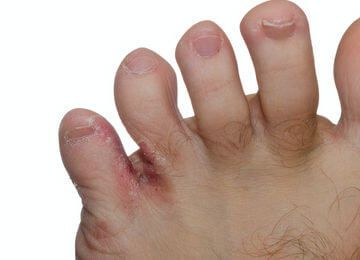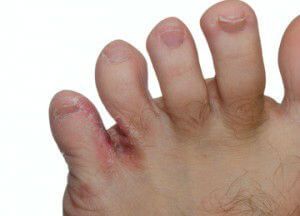
Foot problems can cause everything from a minor irritation to serious disability. A 2009 American Podiatric Medical Association survey revealed that 8 out of 10 respondents reported experiencing some type of foot ailment over the past year.
Fortunately there are natural ways to treat some of the common foot conditions that can develop without having to turn to drastic surgical or other medical treatments.
Athlete’s Foot
Athlete’s foot can be extremely irritating and even painful, but fortunately it’s fairly easy to treat. It spreads easily because oftentimes people with the condition don’t even realize they have it, believing they just have dry skin.
The fungus that causes athlete’s foot thrives in a warm, moist environment. It’s often contracted by walking barefoot where someone else who has it has walked and left the fungus known as trichtophyton behind.
Some of the symptoms that athlete’s foot can cause include dry skin on the soles of the feet, intense itching, burning, scaling, skin peeling, and sometimes bleeding or blistering.
There are several natural treatments for athlete’s foot, including garlic. This pungent herb is a well-known antifungal. Place raw, chopped garlic on the affected areas; allow the skin to absorb the oils for three minutes to an hour.
You can also mix the garlic with olive oil and use a cotton ball to rub it onto the affected area, this helps to ease dryness and soothe the feet as well. Garlic has been found to have an even higher rate of effectiveness than the prescription medication Lamisil.
Using colloidal silver along with apple cider vinegar and water is another excellent cure for athlete’s foot. Soak your feet in one part vinegar and four parts water for about a half an hour.
Dry your feet well, and then apply colloidal silver over the entire foot, taking extra care to get between the toes. Allow to dry thoroughly and then apply a combination of olive oil and tea tree oil to soothe and moisturize the feet.
Bunions
Bunions can be very painful, or at a minimum uncomfortable. They involve the abnormal protruding of the joint that is found at the base of the big toe on either foot. This condition is typically caused by wearing improper shoes, such as high heels, for a number of years. Those who suffer from bunions often find that the condition worsens with age.
If you haven’t developed this condition and frequently wear high heels, it may be time to stop – or at least consider wearing a flat shoe more often. You should also make sure you have plenty of room in the toes.
If you have developed bunions, you don’t have to resort to surgery. Many sufferers are told this is the only option, but applying a chamomile tea bag directly to the bunion as well as massaging it each night with chamomile essential oil may provide relief by balancing the joint fluid and improving the alignment of the toe.
Natural healing advocate, Dr. James A. Duke, also advocates a heat treatment. Applying a paste made up of hot spices like red pepper or turmeric can reduce pain and swelling. You can apply grated turmeric or a paste that is made up of a hot spice and water directly to the bunion.
Ingrown toenails
An ingrown toenail can occur when a piece of the nail breaks the skin, which can happen if your nails aren’t cut properly. Avoid an ingrown toenail by cutting the nail straight across, level with the top of your toe.
They can also occur if your wear shoes that are too tight and pinch your toes together. This condition can be extremely painful, and if ignored, can result in an infection that causes even more pain.
 A doctor can remove the part of the nail that is cutting into the skin, but there are several natural options that can do the trick too.
A doctor can remove the part of the nail that is cutting into the skin, but there are several natural options that can do the trick too.
The most common, and effective, option is to soak the toe in warm water with Epsom salts for about 20 minutes. Then, take a good quality metal nail file and file down the top center of the toenail until it is thinner; don’t file too much, just enough to make it thinner and allow the ingrown part of the nail to lift out.
Place bits of cotton or waxed dental floss under the ingrown edge after each soaking as well to help encourage the nail to grow away from the skin; change the cotton or floss daily until pain and swelling subside.
You need your feet to live a full and active life – be sure and treat them well!
-The Alternative Daily
Sources:
http://www.webmd.com/pain-management/features/foot-heel-pain-prevention

